Ford Mustang (1999-2004) Service Manual: Installation
1. NOTE: A new torque converter drain plug must be used.
Install the torque converter drain plug.
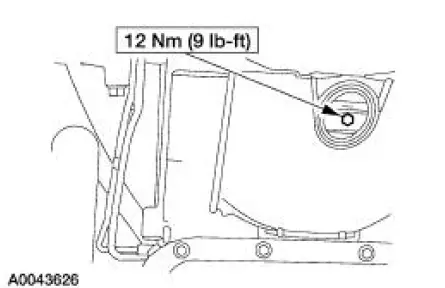
2. Install the torque converter housing plug.
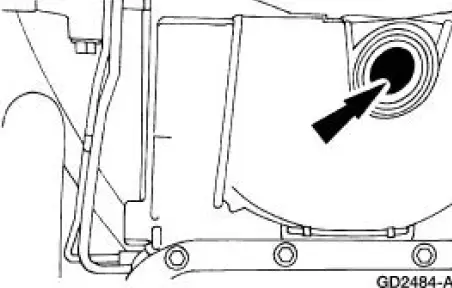
3. CAUTION: If installing a new filter, and the seal remains in the main control bore, carefully use a small screwdriver to remove the seal. Use care not to damage the main control bore.
NOTE: If transmission is being repaired for a contamination-related failure, use a new filter and seal. The filter may be reused if no excessive contamination is present.
Install a new fluid filter and seal as required.
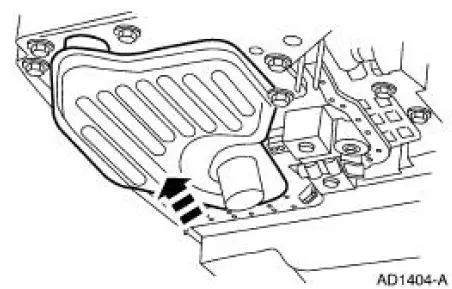
4. Position the pan magnet into the transmission fluid pan.
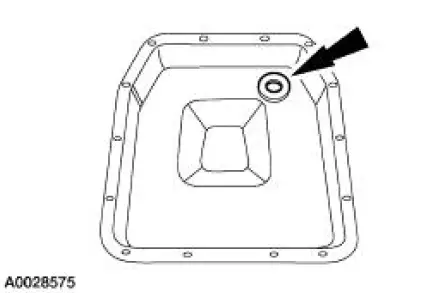
5. NOTE: The transmission fluid pan gasket is reusable. Clean and inspect for damage; if not damaged, the gasket should be reused.
Install the transmission fluid pan and gasket.
1. Position the transmission fluid pan and gasket.
2. Install the transmission fluid pan bolts.
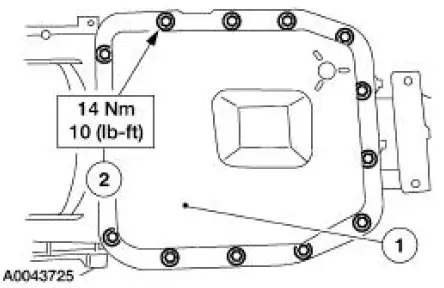
6. Lower the vehicle.
7. NOTE: When the battery is disconnected and reconnected, some abnormal drive symptoms may occur while the vehicle relearns its adaptive strategy. The vehicle may need to be driven 16 km (10 miles) or more to relearn the strategy.
Connect the battery ground cable. For additional information, refer to Section.
8. NOTE: When filling a dry transmission and converter, start with a minimum of 4.7 liters (5 quarts).
Fill the transmission to the correct level with clean automatic transmission fluid.
 Removal
Removal
1. Disconnect the battery ground cable. For additional information, refer
to Section.
2. Raise and support the vehicle. For additional information, refer to
Section.
3. Place a drain pan under ...
 Transmission Filler Tube
Transmission Filler Tube
Removal
1. Remove the bolt.
2. Remove the fluid filler tube.
Installation
1. To install, reverse the removal procedure.
...
Other materials:
Torque Converter (Description and Operation)
The torque converter transmits and multiplies torque. The torque
converter is a four-element device:
impeller assembly
turbine assembly
reactor assembly
clutch and damper assembly
The standard torque converter components operate as follo ...
Catalyst Monitor Sensor
Special Tool(s)
Socket, Exhaust Gas Oxygen
Sensor
303-476 (T94P-9472-A)
Material
Item
Specification
Penetrating and Lock Lubricant
or equivalent
E8AZ-19A501-
B
Removal and Installation
1. Disconnect the battery ground ...
Thermostat - 3.8L
Material
Item
Specification
Gasket Adhesive
TA-6 or equivalent
WSS-M2G408-
A
Motorcraft Premium Gold
Engine Coolant
VC-7-A (in Oregon VC-7-B)
(yellow color)
WSS-M97B51-
A1
Removal and Installation
1. Drain the engine cool ...
